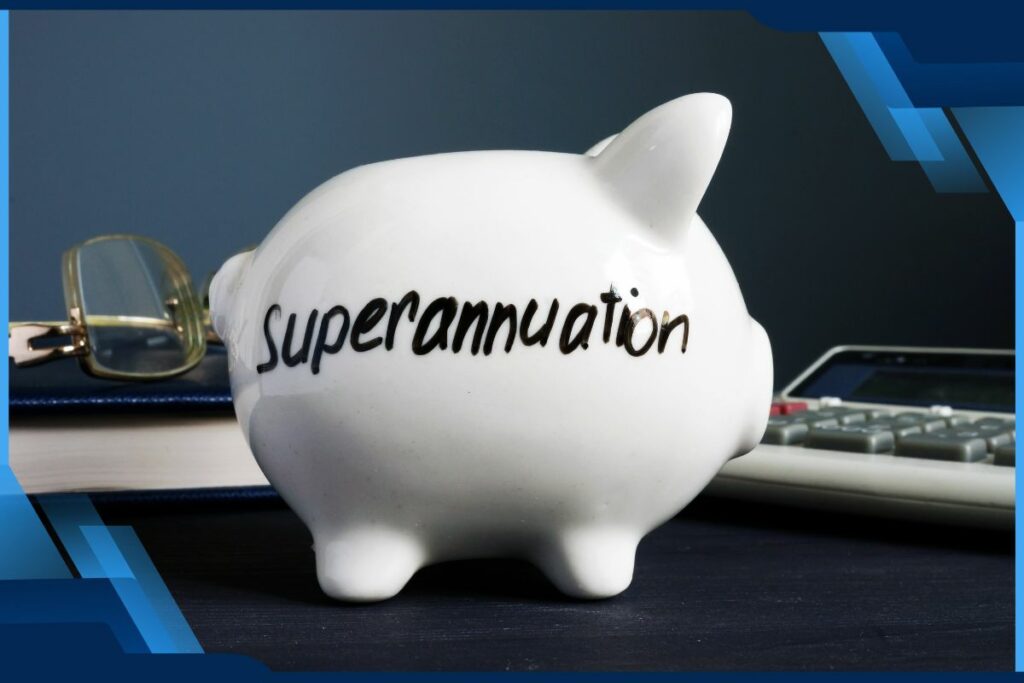Guide to Superannuation: How to Plan for a Secure Retirement

Superannuation, often referred to simply as “super,” is a cornerstone of retirement planning in Australia. For many Australians, it’s a subject filled with confusion, especially when it comes to understanding how it works, how much you should contribute, and how to maximize its benefits. Whether you’re new to the workforce or nearing retirement, having a clear understanding of superannuation is essential for securing your financial future.
In this article, we’ll break down everything you need to know about superannuation, from what it is and how it works, to how you can choose the best fund and contribute effectively. By the end, you’ll be well-equipped to take control of your super and ensure a more comfortable retirement.
What Is Superannuation?
Superannuation is essentially a way to save for your retirement. It’s a long-term investment that’s mandatory for all Australian employees, ensuring that by the time you stop working, you’ll have accumulated enough savings to provide you with an income. The money contributed to your super is invested and grows over time, creating a nest egg for your later years.
Superannuation is governed by strict Australian laws, which set out when and how you can access it. It’s designed to reduce the burden on the public pension system by giving individuals their own financial safety net in retirement.
How Does Superannuation Work?
Super works by employers making regular contributions to your superannuation fund on your behalf. This is known as the Superannuation Guarantee (SG), and it requires employers to contribute a percentage of your salary to your super fund—currently 11% (as of 2024). The money is invested across various asset classes like shares, bonds, property, and cash, with the goal of growing your balance over time.
You also have the option to make additional voluntary contributions to boost your retirement savings. These contributions can offer tax advantages and help you grow your super faster.
While super is your money, it’s generally locked away until you reach your preservation age—usually between 55 and 60, depending on your date of birth. At this point, you can start drawing on your super as either a lump sum or regular income stream.
Benefits of Contributing to Superannuation
There are plenty of reasons why contributing to your super is beneficial. First, it provides financial security in retirement, ensuring you won’t have to rely solely on the Age Pension. The earlier you start contributing, the more time your money has to grow, thanks to compound interest.
Additionally, there are tax advantages. Contributions to your super are taxed at a lower rate than regular income, particularly for voluntary contributions made through salary sacrifice. This means you can grow your retirement savings while also potentially reducing your tax bill.
Lastly, superannuation offers peace of mind. Knowing that you’re building a solid financial foundation for your retirement can reduce stress and uncertainty about the future.
Documents Required to Access Superannuation
When the time comes to access your superannuation, there are certain documents you’ll need to provide. These typically include:
- Proof of identity (such as a passport or driver’s license)
- Your tax file number (TFN)
- Documents proving your residency status (for Australian citizens and permanent residents)
- Details of your super fund and any insurance you may hold through the fund
You’ll also need to meet the eligibility criteria for accessing your super, which usually includes reaching your preservation age and retiring from the workforce. In some cases, you may be able to access your super early due to severe financial hardship or terminal illness, but this requires additional documentation and approval.
How Much Is Superannuation?
The amount of superannuation you’ll accumulate depends on various factors, including how much is contributed, how well the investments perform, and how long you’ve been in the workforce. For most Australians, your employer will contribute 11% of your salary into your super fund. However, you can also make voluntary contributions to boost your balance.
Your super balance will grow over time, thanks to contributions and investment returns. Keep in mind that the total amount you end up with at retirement also depends on fees charged by your super fund, taxes, and how well the investments have performed over the years.
Types of Superannuation
In Australia, there are several types of superannuation funds you can choose from, each with its own features:
- Industry Funds – These are generally run for the benefit of members, without shareholders. They often offer lower fees and are tied to specific industries, though they are available to the general public.
- Retail Funds – Run by financial institutions, these funds often offer a wide range of investment options but can come with higher fees.
- Self-Managed Super Funds (SMSFs) – These are private super funds that you manage yourself, giving you full control over your investments. SMSFs can be more complex and costly to maintain but offer greater flexibility.
- Corporate Funds – These are set up by employers for their employees, typically offering competitive fees and benefits.
- Public Sector Funds – Available to government employees, these funds often have unique benefits like higher employer contributions.
How to Choose the Best Superannuation Fund
Choosing the right super fund is crucial for maximizing your retirement savings. Here are some key factors to consider when selecting a fund:
- Fees – Look for a fund that charges low fees, as high fees can eat into your balance over time.
- Investment Options – Ensure the fund offers investment options that suit your risk tolerance and financial goals.
- Performance – Check the fund’s long-term performance to ensure it has a good track record of growing members’ savings.
- Insurance – Many super funds offer insurance as part of their service. Check the level of coverage and whether it suits your needs.
- Customer Service – Consider the quality of customer service provided by the fund. You want to be able to get help and answers when you need them.
Contributions to Superannuation
Contributing to your super is one of the most effective ways to build up your retirement savings. There are two main types of contributions: compulsory and voluntary.
Compulsory Contributions
These are made by your employer under the Superannuation Guarantee (SG). As mentioned earlier, the current rate is 11% of your salary. These contributions are mandatory for most employees and form the foundation of your super balance.
How to Make Voluntary Contributions to Your Superannuation
You can also make additional contributions to your super fund. There are two main types of voluntary contributions:
- Salary Sacrifice – You can arrange for your employer to divert part of your pre-tax salary into your super. This is tax-effective because contributions are taxed at the concessional rate of 15%, rather than your marginal income tax rate.
- Personal Contributions – You can contribute post-tax income to your super fund, which won’t be taxed when you make the contribution. You may even be eligible for a government co-contribution if your income is below a certain threshold.
How to Calculate Superannuation
Calculating your super is relatively simple but depends on several factors like your salary, how long you’ve been working, and the rate of contributions. For compulsory contributions, multiply your salary by the current Superannuation Guarantee rate (11%). This will give you the annual amount your employer contributes to your super fund.
If you’re making voluntary contributions, you can add these amounts to your total. Keep in mind that there are contribution caps set by the government. For concessional (pre-tax) contributions, the cap is currently $27,500 per year, while non-concessional (post-tax) contributions are capped at $110,000 per year.
Conclusion
Superannuation is one of the most important financial tools for Australians to ensure a comfortable retirement. Understanding how it works, how to contribute, and how to choose the right fund can make a significant difference in your financial future. By making smart decisions now, such as contributing voluntarily or choosing the right investment options, you can maximize your retirement savings and reduce the stress of financial uncertainty in your later years.
Remember, superannuation is your money, and it’s up to you to make the most of it.
Read more Cracking the ATO Code: Your Essential Guide to Navigating Australian Taxes
FAQ
- When can I access my superannuation?
You can generally access your super when you reach your preservation age (between 55 and 60, depending on your date of birth) and retire from the workforce. Early access is only allowed in specific circumstances like severe financial hardship or terminal illness. - How much should I be contributing to my super?
Aside from your employer’s compulsory contributions, you can make voluntary contributions to grow your balance faster. A common recommendation is to contribute at least 10-15% of your income if possible. - Can I lose money in my superannuation?
Yes, since super funds invest your money in the stock market and other asset classes, there’s always a risk of losing money, especially in the short term. However, superannuation is a long-term investment, and fluctuations are to be expected. - What happens to my super if I change jobs?
Your super fund follows you when you change jobs. You can give your new employer your existing super fund details to continue contributions into the same fund, or you can choose a new one. - What are the tax benefits of contributing to superannuation?
Contributions made through salary sacrifice are taxed at the concessional rate of 15%, which is usually lower than your marginal tax rate, making it a tax-effective way to save for retirement.
Related content

First Home Buyer Australia: Grants and Loan Tips You Need to Know

Understand Your Money Mindset: Make Smarter Choices with Behavioural Finance

How BNPL Is Changing Everyday Aussie Spending

Tax File Number explained: what it is, why it matters, and how to apply and protect yours

Tips for Improving Your Creditworthiness
